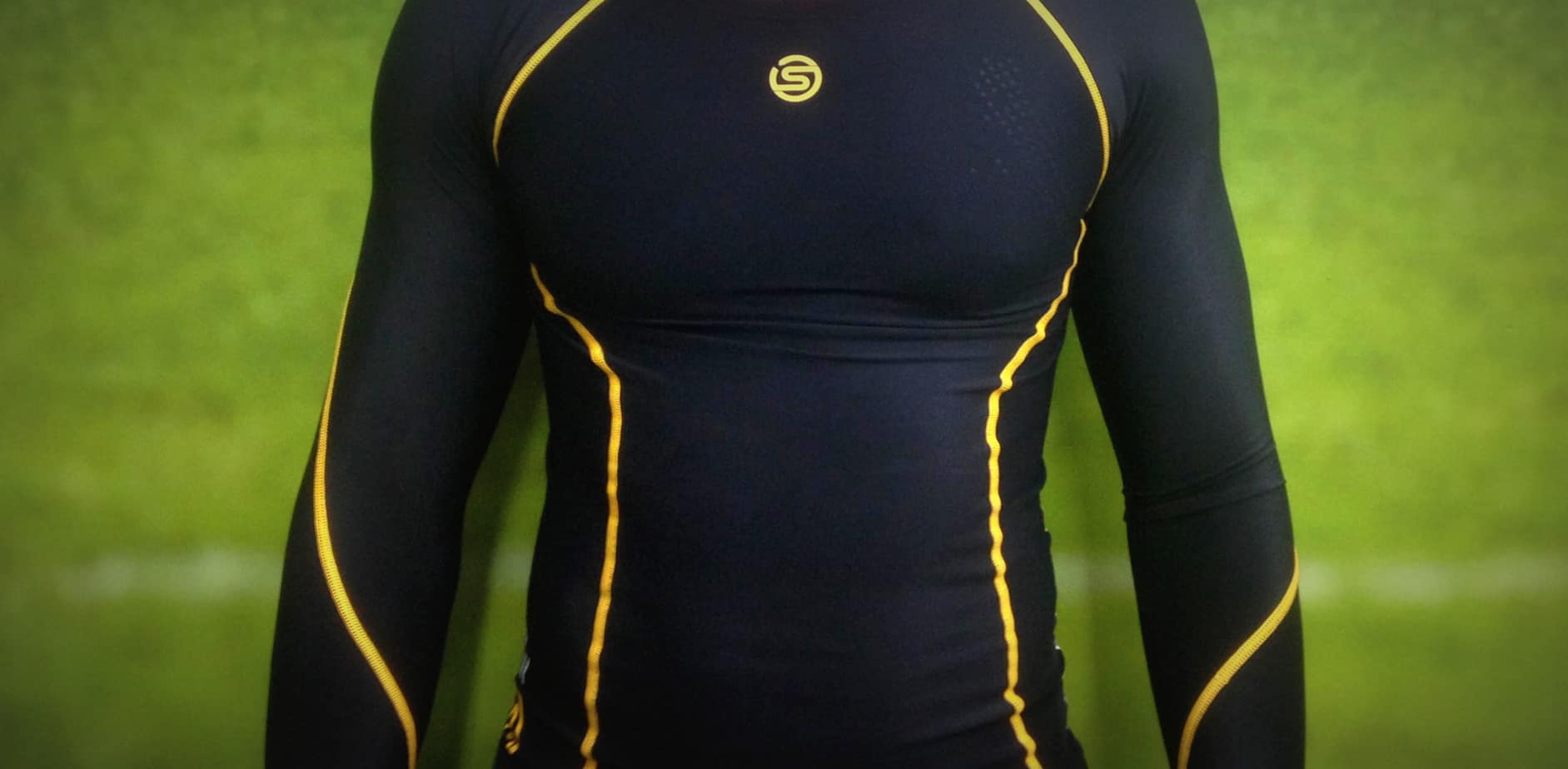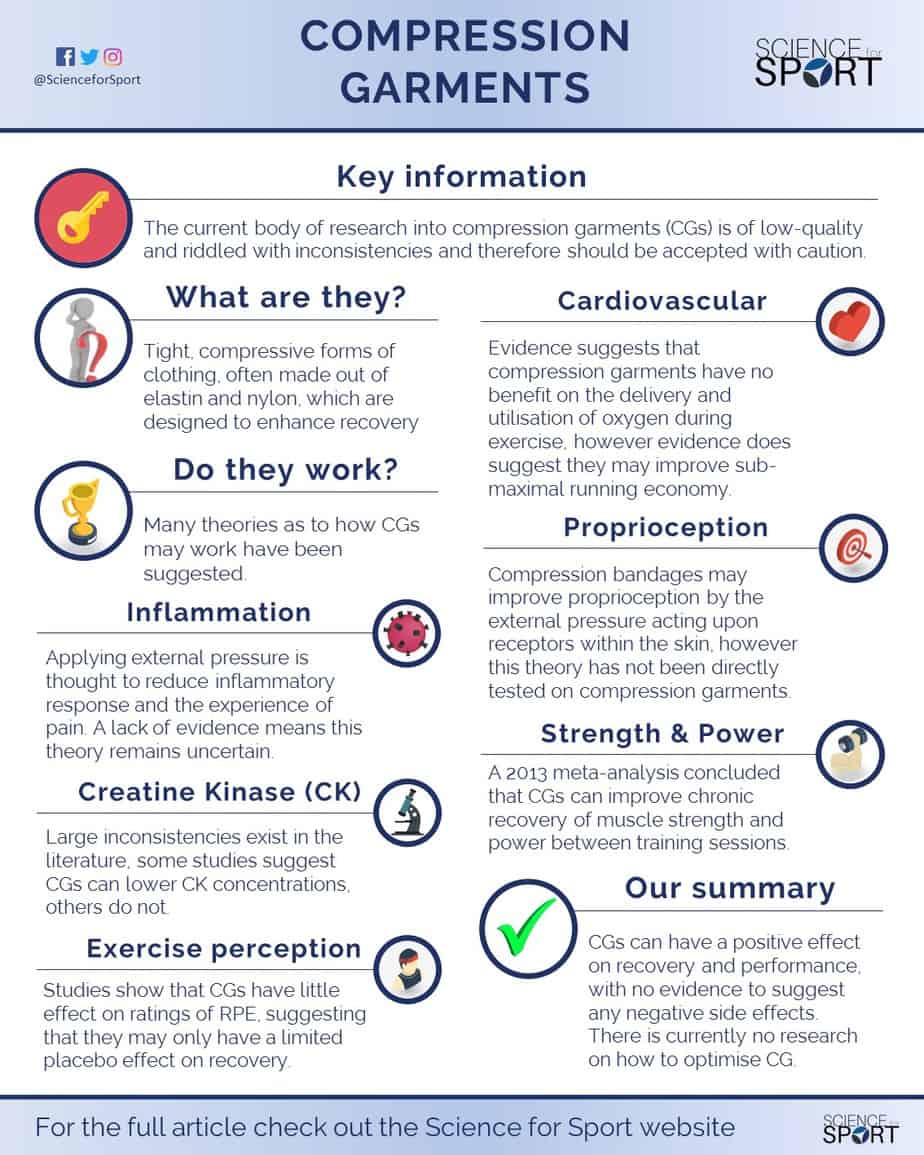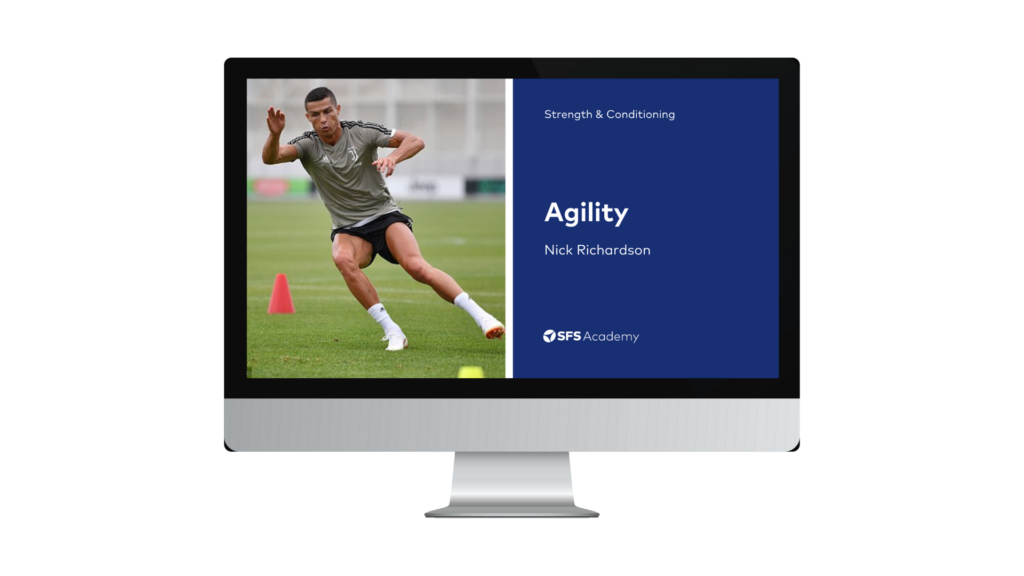Contents of Article
- Summary
- What are compression garments?
- Do compression garments improve recovery and enhance performance?
- Are there any isues with compression garments?
- Is future research needed with compression garments?
- Who should use compression garments?
- Conclusion
- References
- About the Author
Summary
Compression garments have become a popular item for athletes and recreational gym users, whether for their comfort, aesthetic appeal, or for their psycho-physiological function appears to be irrelevant. What is important, primarily for athletes, is their ability to promote recovery and thus improve subsequent performance. The current body of research identifies that compression garments may improve joint awareness, local blood flow, waste product removal, running economy, reduce swelling, reduce muscle oscillations, and decrease post-exercise muscle soreness whilst appearing to have no negative impact on performance.
However, it is important to acknowledge this current body of research is of low quality and riddled with large inconsistencies – meaning the information should be accepted with caution.
Nevertheless, as no negative effects on performance have been observed, compression garments remain a recommended tool for promoting recovery and thus influencing subsequent performance. It is also recommended the compression gradient of the garments is considered and even tailored specifically for each athlete.

What are compression garments?
Competition periods and intense training regimes can lead to exercise-induced muscle damage, which is the cause of the delayed onset of muscle soreness (DOMS). As a result, there has been substantial growth in recovery-enhancing techniques such as massage therapy, foam rolling, electrical stimulation, whole-body vibration, water immersion therapy, hyperbaric oxygen therapy, and the use of compression garments.
Compression garments are tight, compressive forms of clothing, often made out of elastin and nylon, which are designed to enhance recovery. Not only are these worn by athletes in an attempt to improve performance and enhance recovery, but they are also worn in abundance by recreational fitness enthusiasts.
The current commercial belief, despite any evidence, is that wearing compression garments can enhance athletic performance and improve post-exercise recovery time based on the following physiological and psychological influences:
Influences on Recovery
- ↓ in post-exercise oedema
- ↑ removal of waste products
- ↑ local blood flow
- ↓ perception of delayed DOMS
- ↓ concentrations of creatine kinase
- ↓ in muscle oscillations (muscle vibration)
Influences on Performance
- ↑ joint awareness
- ↑ in perfusion
- ↑ muscle oxygenation
- ↑ skin temperatures
- ↓ perception of fatigue
Despite this media explosion and widespread acceptance of compression garments as an effective tool for improving performance and enhancing recovery, there is only a small amount of research supporting their usefulness, not to mention the large inconsistencies within this research. However, one research review has demonstrated that compression garments can have numerous physical and psychological effects on performance and recovery (1).
Do compression garments improve recovery and enhance performance?
Effects on Inflammatory Response
The effects of DOMS following strenuous exercise are very well-documented, however, the primary mechanism responsible for this phenomenon is still not fully understood. Whilst some believe that DOMS results from the disruption of muscle fibres and surrounding tissues (2), others believe it is associated with the inflammatory response (3). Perhaps the most realistic theory is that it is actually a combination of both the disruption of the muscle fibres and their surrounding tissues and the effects associated with the inflammatory response (4).
The inflammatory response is a process which follows tissue damage caused by strenuous activity. This response leads to an increase in osmotic pressure/swelling, therefore sensitising nociceptors (pain sensory nerves) and causing the sensations of pain and soreness (5). It is thought that wearing compression garments applies external pressure upon the body and thus decreases the osmotic pressure and reduces the space available for swelling and haematoma. A reduction in osmotic pressure may lessen the degree of chemotaxis, therefore reducing the inflammatory response and the experience of pain (1). However, due to a current lack of evidence, this theory still remains somewhat uncertain.
Effects on Creatine Kinase
In addition to the supposed effects of compression garments on inflammatory responses, their impact on the attenuation of creatine kinase has also been substantially explored. Creatine kinase (CK) is a well-understood biomarker of muscular damage (6). In fact, the use of compression garments has been shown to be an effective recovery tool for reducing CK concentration after exercise (1). This reduction in CK concentration has been related to a lessening of CK release into the bloodstream, improved removal of metabolites (waste products), and an enhanced repair of muscle tissue (5, 7).
It is suggested compression garments may improve circulation, potentially by enhancing the ‘muscle-pump’ function, however, this still remains uncertain (7). If this were to be true, then compression garments may result in an increased venous return, facilitating the removal of metabolites, and therefore explaining the lowered CK concentrations. It is important to note, however, that there are large inconsistencies in the current evidence – some suggest compression garments can lower CK concentrations, and some suggest no change (8, 9).
Despite there being a variety of mechanisms thought to be responsible for the reduced perception of DOMS and lower concentrations of CK post-exercise following the use of compression garments, it is shown muscle strength and power recover quicker with the use of compression garments (1).
Effects on Cardiovascular Function
The impact of compression garments on cardiovascular function has also been well-explored. They have been shown to have very little effect on sub-maximal or maximal heart rate (7, 10), and sub-maximal and maximal plasma lactate concentrations (7, 11). So whilst it is obvious that compression garments have no benefit on the delivery and utilisation of oxygen during exercise, there is evidence to suggest they may improve sub-maximal running economy (12).
One study showed the use of compression garments improved the oxygen cost of running (running economy) by approximately 9% at velocities of 10, 12, 14, and 16 km/h (12). However, as compression garments have been shown to have no effect on cardiovascular response (7, 11), it has been suggested that compression garments may actually improve running economy by increasing proprioception, muscle coordination, and propulsive force during running (12).
Effects on Proprioception and Muscle Oscillations
Research has indicated compression bandages may improve joint position awareness (proprioception) by the external pressure acting upon the receptors within the skin, thus enhancing proprioceptive abilities (13, 14). Whilst this is a possibility, to our knowledge, this theory has not been directly tested on compression garments, only compression bandages (13, 14).
It has also been demonstrated that compression garments reduce muscle oscillations during dynamic activities such as vertical jumping (15, 16). Reducing muscle oscillations during exercise is thought to reduce muscle fatigue and tissue damage.
Effects on Perceptual Responses
It is often believed that compression garments can have a positive psychological effect (i.e. placebo) on performance and recovery, by decreasing the individual’s perception of DOMS and their rate of perceived exertion (RPE). As previously discussed, the effects of compression garments on DOMS is still unclear. This recovery method has also been repeatedly shown to have little effect on the ratings of RPE during various running and sprinting protocols (7, 10, 16). This suggests that compression garments may have a small, or non-significant, placebo effect on recovery.
Improving Performance
Compression garments are worn not only to improve chronic recovery (between training sessions), but also as a method to enhance acute recovery (during training sessions). A 2013 meta-analysis concluded they can improve chronic recovery of muscle strength and power between training sessions (1). However, there appears to be little evidence supporting their ability to enhance acute recovery during squatting, jumping, sprinting and agility tasks (17, 18, 19, 20). Though compression garments may not improve acute recovery during training sessions, it is important to note that no negative effects on performance have been observed whilst wearing them. This suggests that whilst compression garments may offer no additional acute recovery benefits, they are certainly not going to negatively impact performance.
Are there any issues with compression garments?
Perhaps one of the largest current issues with compression garments is the sizing and applied pressures of the clothing. As the product is typically referred to as a ‘compression’ garment, it would seem obvious the pressurising effect of the material would be significantly important. Despite this, there is substantial neglect to mention the pressure gradient of the garment within the current body of research.
Of those research papers that did mention the pressure gradient, there are large variances between those gradients; this makes it extremely difficult to draw accurate conclusions. Within the current body of research, the typical pressure gradients of compression garments range between 10-30 mmHg (millimetres of mercury), whilst normal diastolic blood pressure averages around 80 mmHg (21). To the author’s knowledge, there is no obvious pressure gradient for optimising recovery.
Is future research needed with compression garments?
To ensure more accurate and practical conclusions can be made regarding the use of compression garments, more research of a higher quality must be conducted. In addition, for those looking to conduct future research on this topic, it is advised that standardised anatomical locations be used and reported to define measurement positions for the lower body (22, 23), with preference given to sites B1 (area at which the Achilles tendon changes into the calf muscles) (23), C (calf at the maximum girth) and F (mid-thigh) (24). Other future investigations should also focus on:
- The effects of compression garments on subjective measures of recovery (e.g. DOMS, and RPE).
- Underlying mechanisms responsible for the improvements in recovery.
- Various pressure gradients and at multiple anatomical locations.
- Effects on diverse population (e.g. genders, youth, elderly, sporting level).
- Optimal duration for wearing compression garments post-exercise.
- Usefulness of wearing compression garments during sleep post-exercise.
Who should use compression garments?
It appears compression garments can have a positive effect on recovery and performance, although there is a lack of knowledge on the best protocol for using this product. Additionally, there is no evidence to suggest that compression garments have any negative impact on recovery or subsequent performance.
In response, it is suggested athletes and recreational fitness enthusiasts continue to use compression garments both during exercise and afterwards as supplementary tools for improving performance and optimising recovery.
Conclusion
With research identifying that compression garments may improve joint awareness, local blood flow, waste product removal, alter sub-maximal oxygen usage during exercise (running economy), reduce swelling, reduce muscle oscillations, and decrease post-exercise muscle soreness, they currently remain an advisable tool for enhancing performance and recovery.
However, it is important to acknowledge that the current body of research on this topic is of low quality and riddled with large inconsistencies – meaning the information should be accepted with caution.
- Hill, J., Howatson, G., van Someren, K., Leeder, J., and Pedlar, C. (2013). Compression garments and recovery from exercise-induced muscle damage: a meta-analysis. British Journal of Sports Medicine, 0, pp.1-7. [PubMed]
- Stauber WT, Clarkson PM, Fritz VK, et al. Extracellular matrix disruption and pain after eccentric muscle action. J Appl Physiol 1990;69:868–94. [PubMed]
- Smith L. Acute inflammation: the underlying mechanism in delayed onset muscle soreness? Med Sci Sports Exerc 1991;23:542–51. [PubMed]
- Connolly DAJ, Sayers SP, McHugh MP. Treatment and prevention of delayed onset muscle soreness. J Strength Cond Res 2003;17:197–208. [PubMed]
- Kraemer WJ, French DN, Spiering BA. Compression in the treatment of acute muscle injuries in sport. Int Sport Med J 2004;5:200–8. [PubMed]
- Clarkson PM, Sayers SP. Aetiology of exercise-induced muscle damage. J Appl Physiol 1999;24:234–48. [PubMed]
- Kraemer WJ, Bush JA, Wickham RB, et al. Influence of compression therapy on symptoms following soft tissue injury from maximal eccentric exercise. J Orthop Sport Phys 2001;31:282–90. [PubMed]
- Davies V, Thompson KG, Cooper SM. The effects of compression garments on recovery. J Strength Cond Res 2009;2:1786–94. [PubMed]
- French DN, Thompson KG, Garland SW, et al. The effects of contrast bathing and compression therapy of muscular performance. Med Sci Sports Exerc 2008;40:1297–306. [PubMed]
- Prasartwuth O, Taylor JL, Gandevia SC. Maximal force, voluntary activation and muscle soreness after eccentric damage to human elbow flexor muscles. J Physiol 2005;567:337–48. [PubMed]
- Duffield R, Cannon J, King M. The effects of compression garments on recovery of muscle performance following high-intensity sprint and plyometric exercise. J Sci Med Sport 2010;13:136–40. [PubMed]
- Bringard A, Perrey S, Belluye N. Aerobic energy cost and sensation responses during submaximal running exercise positive effects of wearing compression tights. Int J Sports Med 2006; 27 (5): 373-8. [PubMed]
- Barrack RL, Skinner HB, Buckley SL. Proprioception in the anterior cruciate deficient knee. Am J Sports Med 1989; 17: 1-6 [PubMed]
- Perlau R, Frank C, Fick G. The effect of elastic bandages on human knee proprioception in the uninjured population. Am J Sports Med 1996; 23 (2): 251-5 [PubMed]
- Doan BK, Kwon Y, Newton RU, et al. Evaluation of a lower-body compression garment. J Sport Sci 2003; 21 (8): 601-10 [PubMed]
- Kraemer WJ, Bush JA, Newton RU, et al. Influence of a compression garment on repetitive power output production before and after different types of muscle fatigue. Sports Med Training Rehabil 1998; 8 (2): 163-84 [PubMed]
- Kraemer WJ, Flanagan SD, Comstock BA, et al. Effects of a whole body compression garment on markers of recovery after a heavy resistance workout in men and women. J Strength Cond Res 2010;24:804–14. [PubMed]
- Ali A, Creasy RH, Edge JA. Physiological effects of wearing graduated compression stockings during running. Eur J Appl Physiol 2010; 109 (6): 1017-25 [PubMed]
- Duffield R, Edge J, Merrells R, et al. The effects of compression garments on intermittent exercise performance and recovery on consecutive days. Int J Sports Physiol Perform 2008; 3: 454-68 [PubMed]
- Davies V, Thompson KG, Cooper S-M. The effects of compression garments on recovery. J Strength Cond Res 2009; 23 (6): 1786-94 [PubMed]
- Wilcock, I.M., Cronin, J.B., and Hing, W.A., (2006). Physiological response to water immersion: A method of recovery? Sports Medicine, 36(9), pp.747-765. [PubMed]
- Comite´ Europe´en de Normalisation. ENV 12718: Medical compression hosiery. Brussels: Comite´ Europe´en de Normalisation, 2001
- Partsch H, Clark M, Bassez S, et al. Measurement of lower leg compression in vivo: recommendations for the performance of measurements of interface pressure and stiffness. Dermatol Surg 2006; 32 (2): 224-3 3 [PubMed]
- McRae, B.A., Cotter, J.D., and Laing, R.M. (2011). Compression Garments and Exercise: Garment Considerations, Physiology and Performance. Sports Medicine, 41 (10), pp.815-843. [PubMed]




